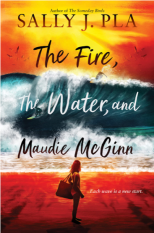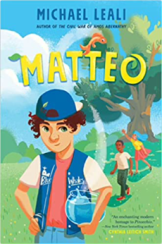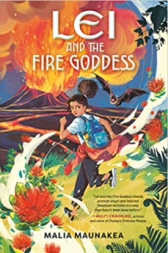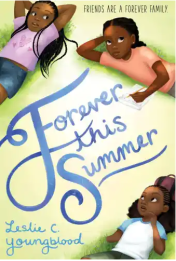Debut Author Interview with Rhonda Roumani on her upcoming novel TAGGING FREEDOM
I’m so excited to be able to introduce you to debut author Rhonda Roumani today. Rhonda’s new book is TAGGING FREEDOM (Union Square) and it launches on November 7, 2023.
I am extra happy about this interview, as Rhonda is a fellow Syrian-American Author and I had the honor of reading an earlier draft-which just brought me to tears because of how beautiful it was! I can’t wait to hold a copy of the finished book in my hands, and for more readers to dive into this incredible book.
About TAGGING FREEDOM
A beautiful full-of-heart middle grade book about a Syrian and a Syrian-American cousin duo who learn to use their voices (and their art) to bring awareness to the calls of freedom from Syria.
Description taken from online:
Kareem Haddad of Damascus, Syria, never dreamed of becoming a graffiti artist. But when a group of boys from another town tag subversive slogans outside their school, and another boy is killed while in custody, Kareem and his friends are inspired and start secretly tagging messages of freedom around their city.
Meanwhile, in the United States, his cousin, Samira, has been trying to make her own mark. Anxious to fit in at school, she joins the Spirit Squad where her natural artistic ability attracts the attention of the popular squad leader. Then Kareem is sent to live with Sam’s family, and their worlds collide. As graffitied messages appear around town and all eyes turn to Kareem, Sam must make a choice: does she shy away to protect her new social status, or does she stand with Kareem?
Author Rhonda Roumani’s work as a journalist infuses Tagging Freedom with rich details and a realistic portrayal of how war affects and inspires children.
This is her middle-grade debut.
Interview with Rhonda Roumani
I loved getting to talk to Rhonda about her new book and I think you will enjoy meeting her and Kareem and Samira as well.
SSS: What a gorgeous cover! Who was the artist and anything readers should know about the beautiful artwork?
RR: The artist is Sara Alfageeh and I couldn’t be more excited about the cover! She captured Samira and Kareem perfectly. She’s so talented. But I’m especially excited because not only am I an Arab-Syrian-American author, but Sara is also an Arab American! I had seen some of her previous work, so when Union Square mentioned her as a possible illustrator, I already knew what a talented illustrator she was.
But I didn’t know that she already had an entire section of her website already dedicated to the Arab Spring and the revolutions that started in the early 2010s. So to have such an amazing artist, who is also an Arab and an American, who grew up in Boston and already understands the hope that fueled the Arab revolutions create the cover for TAGGING FREEDOM — it was just perfect. And I think the result speaks to that. It’s rare to have both the author and the illustrator be from the same background as the book – especially for Arab writers. There aren’t that many of us. So I am especially ecstatic about that.
Also, on a fun note, Sara created a twitter thread on the process of creating a cover from start to finish, using TAGGING FREEDOM as the example. So, check it out!
SSS: Beautiful answer! What is your inspiration behind writing Tagging Freedom?
RR: I wrote TAGGING FREEDOM for so many reasons. The conflict in Syria is often described as a civil war, or the worst humanitarian crisis of our generation. Before the war, most people couldn’t even place Syria on the map. So I wrote TAGGING FREEDOM because I wanted kids to understand that the conflict in Syria very clearly started as a revolution – as a moment of hope—when Syrians believed they could create a new, better country, free of oppression and corruption.
The other thing I wanted kids to know is that kids, the same age as Samira and Kareem, helped ignite the revolution, with a simple act of graffiti. Right after mass protests led to the fall of Egyptian President Hosni Mubarak—which the Arab world followed closely– a group of kids from a southern Syrian town graffitied “It’s your turn doctor” on outdoor walls. Those kids were arrested, and their arrest ignited mass protests across the country.
So, in the end, it was these kids who inspired this book.
And, finally, there’s a story that happened at my kid’s school that also inspired me to write the activist parts of TAGGING FREEDOM. A few years ago, a group of kids from my children’s school wanted to hold a walk out for a Global Climate strike led by Greta Thunberg. These kids approached the principal and the principal basically said no, citing safety concerns. Then the parents took it to the PTA meeting and the principal doubled down on her position. An argument ensued and the parents left the meeting very upset. And it ended there. The students didn’t walk out.
But I imagined a different outcome- one in which the kids and parents refused to be limited by authority.
One of the phrases that my characters graffiti—using graffiti chalk in their Massachusetts suburban town is FREEDOM REQUIRES NO PERMISSION.
By that account, activism does not require permission. I believe the students should have walked out that day. And received detention. And then the parents should have told them that their detention is a badge of honor. In real protests, there are stakes. Kareem’s stakes are much higher than Samira’s. But in the end of TAGGING FREEDOM all the kids learn that lesson—in different ways. I won’t ruin the ending for you. But I wanted to tackle this idea directly.
SSS: Wow! I felt that!
As a Syrian, reading this story broke my heart and yet I also felt so seen. What was it like to draw on memories and experiences of being Syrian as you wrote?
RR: Since I’m a journalist, I think I naturally rely on real events in my storytelling. So much of TAGGING FREEDOM is drawn from either my experience as a Syrian or Syrian American, my experience as a journalist, or from the experiences of family or friends.
I was not in Syria when the revolution started. But I did work as a journalist in Syria from 2003-2006—and I covered the country’s fledgling democracy movement at the time—and then the subsequent crack down that took place. I had never seen a protest in Syria—the crowds were small, nothing like the protests that Kareem took part in in the book. But they were demanding change and I held onto those images and those feelings when I described the revolution and protest in TAGGING FREEDOM. It was one of the most powerful moments I’ve ever witnessed. The stakes were really high, people were harassed, and protestors faced real harm.
I also drew on the heartache of watching the revolution from afar. So many family members and friends left Syria, not knowing when they would return. And one of the most painful experiences is having to leave the people you love behind – for one reason or another. To know you’re safe and not know if your family is okay is another form of torture. And Kareem definitely feels that as the situation gets more precarious in Syria, while he is in the United States.
The other thing that I drew upon was the role of doctors. I knew some of the doctors working in Syria and they were really amazing. While others were escaping bombs, some of these doctors were either choosing to stay, or running towards the bombs. Although TAGGING FREEDOM takes place at the beginning of the revolution, I wanted to pay homage to them. So, Kareem’s parents stay behind to take care of the people because that is how they choose to support the revolution. And Kareem has a hard time grappling with that. He knows they are doing something important; but he wants his parents to be safe, by his side.
Most of what we’ve seen in the media are the images of Syrians as refugees on boats, or crossing Europe by foot. Those images are obviously devastating. But the subsequent war that erupted in Syria hit Syrians in so many different ways, many of them untold stories.
And, of course, there were the everyday, lived experiences of being in Syria, and of growing up in a Syrian household. The way we teased our parents about something they would say in English. (They teased us when we messed up a phrase in Arabic too.) Or going to the mosque; or our food and how it was often strange to some of my friends, but so delicious! Or the way Samira had to learn to bridge her Syrian life at home with her American life outside the home. I very much did those things growing up. So, a lot of the book is based on my real, lived moments.
SSS: How are Kareem and Samira similar? How are they different? Was it difficult to write a book in two points of view?
RR: Kareem and Samira are quite different.
Kareem is headstrong and impulsive. He’s a 13 year-old boy who quickly embraces the ideas of the revolution. He loves graffiti and he understands that what is happening in his country is important. He wants to be part of the revolution, But he also ends up having to grow up quickly because of what has happens to him and to his country. His parents send him to America because they fear for his safety. He worries about his friends and his family from afar.
Samira is cautious, a little hesitant. But there’s real reasons for that. Unlike Kareem, who has always been part of the majority—Samira has grown up as a hyphenated Other—Syrian and Muslim in America. She has been teased because of her name. She has heard people say things about Muslims. Her home feels different than her friend’s homes. She has a community outside school that looks and feels very different than her school community. There are different social rules. Kareem is confident in who he is, but his identity has never really been challenged by his peers. Samira has had to deal with microaggressions. But, in the end, they both love their culture and who they are.
I actually loved writing this book from two points of view. I think the most difficult part was not making Samira’s arc feel silly, when placed next to Kareem’s arc. Their narratives do not have equal stakes. But I really liked writing from two points of view because it helped me break down the story. By alternating the voices, it even felt more manageable.
SSS: The subject of art is important in the book—can you talk more about how you became inspired to write about art and its role in freedom, specifically Syrian freedom?
RR: When I lived in Syria, a friend of mine owned an Art gallery. There were so many talented young artists. But true art also necessitates freedom. And Graffiti is the ultimate form of artistic freedom because it’s out in the streets, for everybody to see. So graffiti did not exist in Syria before the revolution. And the fact that the revolution was ignited by an act of graffiti – and that graffiti and protest art became more commonplace during the entirety of theconflict is something I wanted to highlight. The character of Ramy is actually based on a real graffiti artist named Nour Hatem Zahra, who was nicknamed “Spray Man.”
SSS: Diverse books are so important (and a passion of mine!). How does the Muslim Faith and Syrian Culture play a role in your book and in Kareem and Samira’s lives?
Their faith and their identities are everything to Kareem and Samira. Samira goes to the mosque with her family regularly. She’s Muslim and Syrian, there’s no doubt about that. The fact that she has to reconcile her outside world and her inside world at home is something she’s figuring it out. She’s not ashamed of who she is, but she likes keeping them separate. It feels neater, maybe easier that way. But you can’t keep different parts of yourself separate for too long. You’re a whole person and you have to bring different parts of you together in order to be your full, realized self.
Kareem is also obviously very Syrian, as he explores what it means to be Syrian when your country is changing. And he’s Muslim, even though he has stopped praying since he arrived in the United States. In his most painful moment, he pulls out his prayer rug, which has been in the closet since he arrival, and he gains a lot of comfort when he finally does pray and performs the act of sujud, which is when Muslims touch their forehead to the ground. It’s a moment when one completely submits to God, to something greater than oneself. For Kareem, it’s a moment when he realizes so much is out of his control. He must put his trust in something higher. It is the ultimate act of faith and I loved putting that vulnerable moment on the page.
SSS: My heart is just in love with your book! Will there be more Samira and Kareem in the future?
RR: I don’t think so. I think another Samira and Kareem book would have to be YA novel. The next stage of the revolution is very different, and difficult. I don’t know if I want to write about that stage. It’s so painful. And so sad. That book would be a very, very different book.
Writing Process
SSS: Did your journalist background help you in writing TAGGING FREEDOM? How is being a journalist different or similar to writing middle grade?
RR: Definitely. I explained some of that above. I definitely took scenes directly from my own experiences as a journalist. And I thought of my many friends who were in the streets protesting at the time—or have had to leave the country for their own safety.
Writing for middle grade is so different. It was challenging. Journalists definitely tell – we’re not always given the space to “show” what is happening. So “the show, don’t tell” concept is not something we practice in daily journalism.
SSS: Any advice for fellow middle grade authors?
RR: I think the most important thing I did was find friends and a community of other writers. Do not write alone. The path is not easy. There are so many ups and downs. I got a lot of help from other Kidlit Author friends. So find your critique groups and writing partners. They are everything.
Thank you so much Rhonda for answering my questions! I hope everyone picks up a copy of your beautiful book.
Preorder link:
Bookshop
Amazon
For more Muslim Book Recommendations, check out this RAMADAN BOOKLIST FOR EDUCATORS
About Rhonda Roumani
Rhonda Roumani is a Syrian American journalist who lived in Syria as a reporter for U.S. newspapers. She has written about Islam, the Arab world, and Muslim-American issues for more than two decades. Currently, she is a contributing fellow at the Center for Religion and Civic Culture at USC. Rhonda lives in Connecticut with her family.
Like this:
Like Loading...
 redeeming qualities by weaving words into her web, then enlists the help of the farmer’s daughter, Fern, to save him. This beloved story of friendship and the power of language has been a classic for seven decades. Its opening line is one of the most powerful in literature. ‘Where’s Papa going with that axe? ‘ said Fern to her mother as they were setting the table for breakfast.”
redeeming qualities by weaving words into her web, then enlists the help of the farmer’s daughter, Fern, to save him. This beloved story of friendship and the power of language has been a classic for seven decades. Its opening line is one of the most powerful in literature. ‘Where’s Papa going with that axe? ‘ said Fern to her mother as they were setting the table for breakfast.” She really stirred things up! Harriet wants to be a writer and keeps a notebook on everyone around her, what she knows and exactly what she thinks about them. Then she loses the notebook. Her nemesis finds it, and soon everyone knows everything she said. Her task then is to take responsibility for her words and to find ways to mend friendships. The book’s challengers overlooked that part. Harriet the Spy was banned through most of the South for encouraging children to “talk back, spy on others, lie, and disrespect their parents.” It also modeled “improper behavior for a girl.” School Library Journal said, ”Harriet the Spy bursts with life.” It has sold over five million copies.
She really stirred things up! Harriet wants to be a writer and keeps a notebook on everyone around her, what she knows and exactly what she thinks about them. Then she loses the notebook. Her nemesis finds it, and soon everyone knows everything she said. Her task then is to take responsibility for her words and to find ways to mend friendships. The book’s challengers overlooked that part. Harriet the Spy was banned through most of the South for encouraging children to “talk back, spy on others, lie, and disrespect their parents.” It also modeled “improper behavior for a girl.” School Library Journal said, ”Harriet the Spy bursts with life.” It has sold over five million copies. Leslie drowns trying to reach Terabithia, the hideaway they have created, and Jesse struggles to deal with her loss. School Library Journal ranks this novel number ten of the all-time best books for children. But the book also ranks high on the American Library Association’s list of the most commonly challenged books in the United States.
Leslie drowns trying to reach Terabithia, the hideaway they have created, and Jesse struggles to deal with her loss. School Library Journal ranks this novel number ten of the all-time best books for children. But the book also ranks high on the American Library Association’s list of the most commonly challenged books in the United States. The New York Times had to create a separate list for children’s books, because the Harry Potter volumes coming out were taking up a third of the spaces on the Times best-seller list.
The New York Times had to create a separate list for children’s books, because the Harry Potter volumes coming out were taking up a third of the spaces on the Times best-seller list. Shel Silverstein’s clever A Light in the Attic, was the first children’s book to make the NYT bestseller list. It stayed there for 182 weeks. But it was banned in a Florida school and later some other schools in Wisconsin and Texas because some adults thought it encouraged “disobedience, violence, suicide, Satanism and cannibalism.”
Shel Silverstein’s clever A Light in the Attic, was the first children’s book to make the NYT bestseller list. It stayed there for 182 weeks. But it was banned in a Florida school and later some other schools in Wisconsin and Texas because some adults thought it encouraged “disobedience, violence, suicide, Satanism and cannibalism.” The Texas State
The Texas State




















